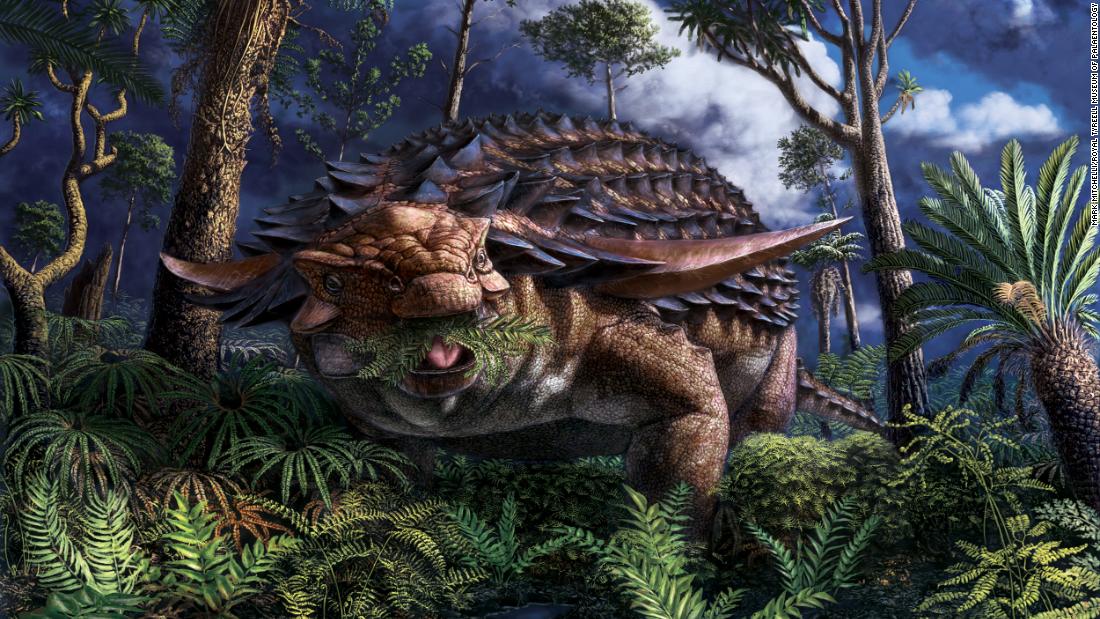
In this case, a muddy tomb encased and preserved the dinosaur so well that even its stomach contents remain to tell us that it was a picky eater.
The details of this dinosaur's plant-based diet were published Tuesday in the journal Royal Society Open Science.
"The leaf fragments and other plant fossils were preserved down to the cells," said David Greenwood, study coauthor, Brandon University biologist and University of Saskatchewan adjunct professor, in an email.
"The finding of the actual preserved stomach contents from a dinosaur is extraordinarily rare, and this stomach recovered from the mummified nodosaur by the museum team is by far the best-preserved dinosaur stomach ever found to date," said Jim Basinger, study coauthor and University of Saskatchewan geologist, in a statement.
"When people see this stunning fossil and are told that we know what its last meal was because its stomach was so well preserved inside the skeleton, it will almost bring the beast back to life for them, providing a glimpse of how the animal actually carried out its daily activities, where it lived, and what its preferred food was."
This discovery sheds light on definitive evidence of what a large herbivorous dinosaur ate — in this case, a lot of chewed-up fern leaves, some stems and twigs.
That's enough time for lush ferns to pop up.
"The discovery of charcoal together with a fern-filled stomach opens a window into the biology of this large herbivorous armoured dinosaur as it suggested Borealopelta was likely a keystone herbivore that shaped the landscape by its grazing, and that it also grazed on the ferns growing in open areas created by wildfires," Greenwood said.
"That is so cool."
Paleobotany, which is the study of plant fossils, provides insight that dinosaur skeletons simply can't, Greenwood said.
Gizzard stones, much like those swallowed by birds to help with digestion, were also found in the dinosaur's stomach.
